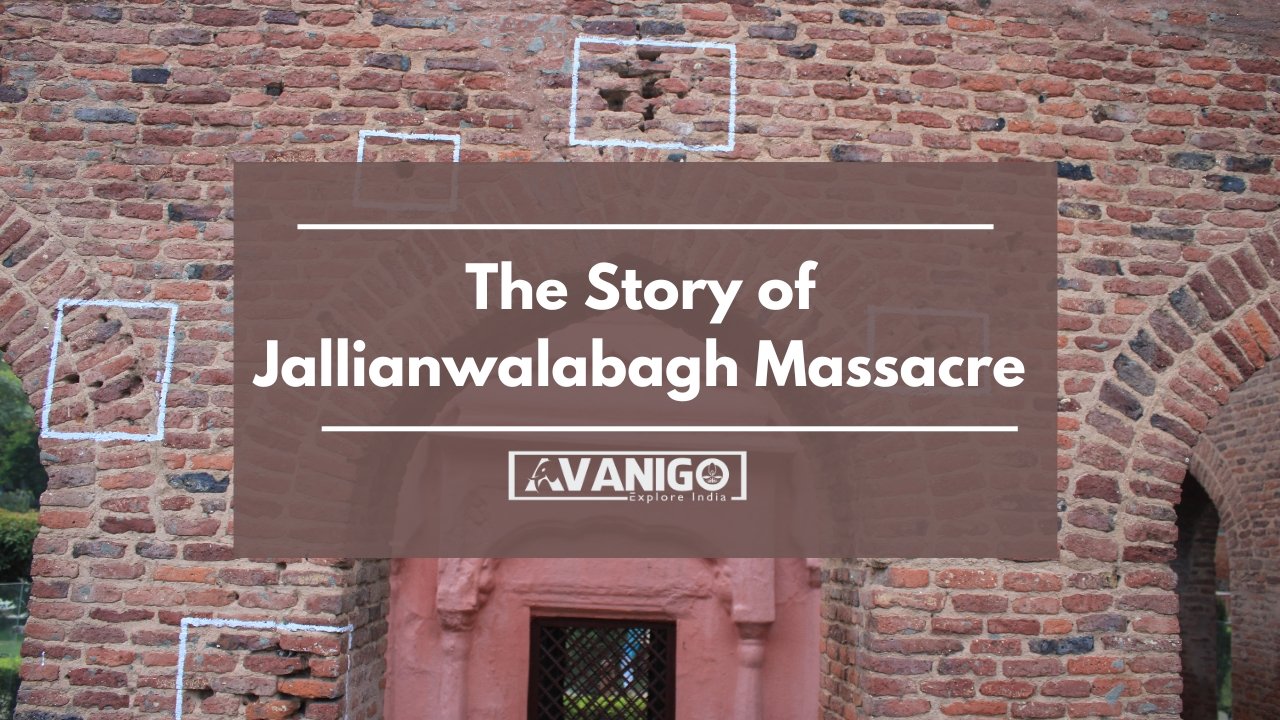Tensions had been rising since the tyrannical Rowlatt Acts came into force. Brigadier Dyer’s troops swung into the walled garden, rifles cocked on April 13 1919. Without warning or mercy, they rained bullets on the unarmed crowd. When the gun smoke cleared, bodies lay shattered. A nation watched in horror as the truth emerged. At Jallianwala Bagh, Britain had shown its true ruthless face. In this post, we will understand the significance of Jallianwala Bagh massacre, also called Amritsar Massacre, and why it is remembered even after many years.
Quick Navigation
Causes of Rising Unrest in Punjab
Troubled winds had begun to blow across India in the years before that fateful Baisakhi of 1919. The British rulers, worried about more people joining the freedom movement, brought a new and scary law called the Rowlatt Act without asking our leaders.
What is Rowlatt act? According to Rowlatt act, the police could arrest anyone for no reason and keep them in jail for as long as they wanted without a fair trial.
Such unjust rules made Indians furious. Even the kind-hearted Gandhi ji was saddened to see fundamental rights snatched away. He decided to start peaceful protests against the Rowlatt Act through Satyagraha. In Punjab, people held huge meetings to discuss how wrong it was.
What Happened at Jallianwala Bagh
The city dwellers had travelled to Jallianwala Bagh for their customary weekend pursuits. But they did not know about the curfew ordered by the police. Suddenly, a military officer called Brigadier General Dyer arrived with many soldiers. Without any warning, he ordered the soldiers to fire at the innocent people.
Men, women, and children began screaming and running in all directions. But there was no way to escape as the exits from the walled garden had been blocked. General Dyer continued firing for ten long minutes. When the bullets stopped, hundreds had died, and over 1000 lay injured. Many tried to hide in an empty well but couldn’t be saved. Jallianwala Bagh was a day of unimaginable fear and grief.
The Death Toll of Jallianwala Bagh
The final death toll is still debated, as no proper records were kept. While the British government report a year later stated 379 deaths, Indian estimates range between 1000-1500 deaths. Hundreds more were injured, with countless bullet injuries due to the use of live ammunition against an unarmed crowd in a closed space.
Men, women, children – nobody was spared. Some people even jumped into a long open well inside Jallianwala Bagh to save themselves from the bullets, but many drowned and died there.
Significance of Jallianwala Bagh Massacre
Many Indians, till then, had hoped that petitions and requests would be enough to gain freedom. But after seeing such barbarity unleashed on their own families, brothers and sisters, people began to understand something had to change.
Leaders like Tilak ji and Lajpat Rai ji openly said now that peace and non-violence would not work – Britain must promise to leave India right away or else face people’s anger through brave Satyagraha.
Meanwhile, across the seas, in London, where decisions about India were made, some good men like Winston Churchill stood up and called what happened in Amritsar a terrible crime. But the British government, stuck in their arrogance, refused to scold or punish General Dyer, who led the attack. This showed Indians that the rulers saw them as inferior people who could be killed without consequences.
Impact of Jallianwala Bagh
Immediately after the Amritsar massacre, there was a martial law in Punjab which infuriated Indian further. As a protest, Rabindranath Tagore renounced his Knighthood which was awarded to him in 1915. The impact of Jallianwala Bagh did not end here. The Hunter commission was set up to investigate the causes of Jallianwala Bagh massacre.
In 1920, exactly a year later, Gandhi ji launched the Non-Cooperation Movement. From towns to tribal forests, people joined this peaceful protest with one common demand – Britishers Quit India. This marked a decisive shift from begging and petitions to mass civil disobedience and protest. They boycotted English goods and schools. Slowly, the flame of freedom spread across India, and it began burning more vital than ever before.
Conclusion
The Jallianwala Bagh massacre or Amritsar Massacre was a watershed moment recounting the oppressive British imperialism. Jallianwala Bagh anniversary is observed every year on April 13 to pay respects to those martyrs. Though the physical site has changed, the memories and emotions of that day shall never fade from our collective conscience. The of Jallianwala Bagh massacre united Indians and accelerated our march to freedom. It is symbolism of the darkness out of which modern India emerged. of Jallianwala Bagh lessons of non-violence in the face of tyranny are remembered even now.
FAQs:
Where is Jallianwala Bagh located?
Jallianwala Bagh is located in Amritsar on the Golden Temple Road a few hundred meters away from the Amristar Golden Temple
Who started Jallianwala Bagh massacre?
General Dyer is the key person behind the firings occurred at Jallianwala Bagh.
When was Jallianwala Bagh built?
The inauguration of Jallianwala Bagh happened in 1961. The then President Sri Rajendra Prasad inaugurated Jallianwala Bagh.
When is Jallianwala Bagh massacre anniversary?
Jallianwala Bagh massacre anniversary is observed every year on April 13.
Swetha is a Content Specialist, LinkedIn Branding and B2B Marketing Consultant. When she is not in the world of B2B, she researches the roots and beauty of Indian Culture and Traditions. She is the author of the book: 365 Days 365 Posts – The Guide to LinkedIn Personal Branding, available exclusively on Amazon. Connect with her on LinkedIn.

